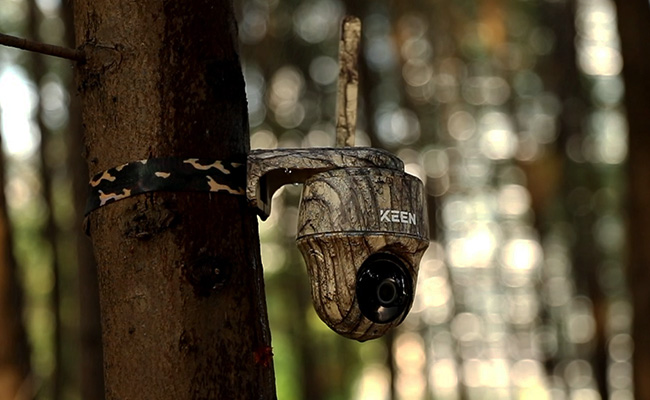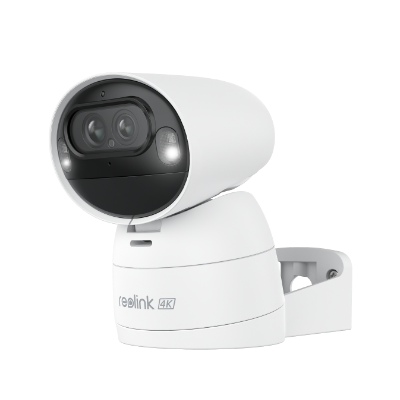Guide for the Best WiFi Wildlife Cameras

Whether you’re a professional photographer or just a nature lover, if you’re looking to buy a WiFi wildlife camera, then this guide is for you. Through this article, we’ll take you on a journey to uncover some of the best WiFi wildlife cameras and explore the advantages that come with using WiFi over other types of wireless technology. We’ll also provide you with some tips on how to get the most out of your WIFI wildlife camera.
What is a WiFi wildlife camera?
WiFi wildlife cameras are trial cameras or security cameras that have WiFi connectivity. This allows these cameras to be remotely controlled anywhere you have an internet connection. This mode of connectivity is different to cellular-enabled devices.
Here are three purposes for how a WiFi enabled wildlife camera can be used.
-
WiFi wildlife cameras can be used to take pictures or videos of animals or birds in their natural habitat without disturbing them.
-
WiFi wildlife cameras can be used by scientists to study animal behavior, by conservationists to track endangered species, and by nature photographers to capture amazing footage.
-
WiFi wildlife cameras can be used to solve crimes, such as uncovering illegal poaching activities of endangered animals.
These cameras are also great for those who don’t need them for such professional purposes. They can be used to keep an eye on your pet while you’re away from home or keep an eye on your property even after the sun goes down as many models are equipped with night vision.
What are the Benefits of a WiFi Wildlife Camera?
WiFi wildlife cameras come in a variety of shapes and sizes. They are also easy to install as they do not require any wiring to connect to the internet, arguably a top perk of any WiFi enabled device. That’s not all, here are some other benefit of a WiFi wildlife camera.
-
WiFi wildlife camera can be ready to use instantly once powered up
-
Some WiFi cameras offer greater flexibility in terms of where you can place them. This makes them ideal for use in remote locations.
-
WiFi cameras can be connected and controlled remotely using a phone or tablet.
-
You can view your footage easily from your device, no matter where you are
WiFi wildlife cameras also differ from their 4G counterpart models and come with unique benefits in comparison such as:
-
Models with WiFi connectivity can be more affordable than those with 4G or cellular connectivity compatibility.
-
WiFi cameras offer a more reliable connection than 4G, meaning you are less likely to experience any interruption in service.
Types of WiFi Wildlife Cameras and Power Supply Capacities
There are three types of WiFi wildlife cameras. Each come with their own power supply mechanism and capacities. The three cameras available are the trial camera, a battery powered security camera and a WiFi security camera. Let’s go through each different type with their advantages.
Trail Camera
The most affordable WiFi wildlife camera on the market is the trail camera. To power the trial camera, you need to buy AA alkaline dry batteries. This power supply method is quite convenient since you don’t have to worry about recharging the batteries and the batteries are cheap to buy. Despite these advantages, this power supply method can become a hassle because you’ll need to ensure you have replacement batteries consistently on hand if you use the camera a lot. Trial cameras are ideal for short-term use such as scouting game trails.
Battery Powered Security Camera
A battery powered security camera is another popular type of WiFi wildlife camera. The battery is rechargeable so you can use it for a long time before you need to recharge it and don’t have to worry about purchasing replacement batteries. This reason alone makes this device worth the investment as you don’t have to replace the batteries as often, meaning it can capture more footage in any one session. As it’s totally wireless, this gives you more freedom in terms of placement as well, for exmaple, the Reolink Go PT Ultra.
4K 8MP Wire-Free 4G LTE PT Battery Camera
4K 8MP; Smart Detection; 355° Pan & 140° Tilt; Battery/Solar Powered; Color Night Vision; Smart Real-Time Alert.
WiFi Security Camera
The third option is a WiFi security camera. This camera has an attached power cord, that needs to be connected to a power outlet. As a WiFi enabled device, you can view the live streaming anywhere if there is an internet connection. The top benefit of this device is being able to connect to the internet without the need for an expensive data plan. A disadvantage is it only useful anywhere you have access to a direct power outlet to connect it up with.
If you’re seeking a Wi-Fi security camera specifically for wildlife observation, the Reolink Argus Track is an absolute must-consider. This remarkable dual-lens camera operates on battery or solar power, delivering impressive 4K 8MP resolution. What truly sets it apart is its auto-zoom tracking capability—it can automatically follow and zoom in on moving animals, vehicles, or people within its field of view. Whether you’re monitoring elusive wildlife or capturing dynamic outdoor scenes, the Argus Track ensures you won’t miss a moment.
4K Dual-Lens Wi-Fi Solar/Battery Camera
4K 8MP Ultra HD, Auto-Zoom Tracking, Pan, Tilt & 6X Hybrid Zoom, Color Night Vision, Dual-Band Wi-Fi.
Top Recommended Uses for Each WiFi Wildlife Camera
Each wildlife camera has been designed to suit different needs and purposes, with each type on the market having different models and capabilities. Let’s go through some reasons the trail camera, the Battery Powered Security Camera and WiFi Security Camera are recommended and how they can be used as wildlife cameras.
Trail Camera
Traditionally, trail cameras did not come with WiFi capability, but now it is becoming a popular feature. This means you can view and download your photos from anywhere you have an internet connection. When choosing a trail camera, be sure to check if it has WiFi capability as many only have a 4G or cellular connectivity option. Trail cameras are highly recommended as wildlife cameras as using them is a great way to get wildlife photos without disturbing the animals.
Battery Powered Security Camera
Battery powered security cameras are easy to install and can be used for home, yard, or farm security. The rechargeable battery is environmentally friendly and will save you money in the long run. Although not designed specifically as a wildlife camera, they can be used as one. Here are some recommended ways uses as wildlife cameras.
-
To monitor wildlife
-
To keeping an eye on your property
-
The camera can be used for research.
-
Farmers can use them to keep track of their herds and determine if predators are in the area.
There are many uses for a battery powered security camera and they are a great addition to any home or business.
Wifi Security Camera
WiFi security cameras are becoming increasingly popular as they offer several advantages over traditional security cameras. This is because they are always on, so you can constantly monitor your property. Again, these are not designed as wildlife cameras, but can result in capturing natural footage of wildlife around your property.
Conclusion
As you can see, not all WiFi cameras are specifically designed as wildlife cameras but can be used to capture similar footage all the same. If you are looking for a WiFi wildlife camera most suited for remote locations, a WiFi enabled trail camera will be the best choice for you. If you live in a rural area, the Battery Powered Security Camera or WiFi Security Camera will suffice in monitoring any wildlife activity around your property. Each type of WiFi wildlife camera has its own advantages. Choose the one that best suits your needs and budget.
FAQ’s
1. Do wildlife camera need WiFi?
Yes, a wildlife camera needs WiFi capability. Having WiFi connectivity as a feature allows you to connect the camera to your home network. This way, you can view the footage from the camera on your computer or mobile device. With WiFi you can also share the footage with others. Additionally, WiFi makes it easy to keep the camera charged, as you can simply plug it into an outlet. Overall, WiFi capability is a great feature for wildlife cameras and helps to make them more user-friendly.
2. How does a WiFi wildlife camera work?
WiFi wildlife cameras work by using your home’s WiFi signal to connect to the internet if it is placed within range. The WiFi signal is transmitted from the camera to your router, and then from your router to the internet. WiFi cameras operate just like any other WiFi-enabled device, such as a laptop or smartphone. This allows the camera to send the captured images or footage to your phone, email, or online account. Some cameras can store footage on an SD card so that you can view it later.
3. Are WiFi trail cameras worth it?
Yes, investing in a WiFi trail camera is worth it. Having a trial camera with WiFi capability has several advantages over traditional trail cameras. Some advantages include the ability to view pictures and videos in real time, download footage immediately, and adjust settings remotely. On top of this, they are very easy to use as most models come with an intuitive app that allows you to control the camera’s functions.
4. What is the difference between WiFi and Celluar wildlife cameras?
WiFi wildlife cameras use WiFi to send and receive data. On the other hand, cellular wildlife cameras use a data plan to send and receive data. Cellular wildlife cameras are powered by batteries, while certain WiFi wildlife cameras have an option to use a power cable. Some cellular wildlife cameras also have WiFi capability as a feature. It is best to check the product specification before you buy any wildlife camera.
5. What is a WiFi wildlife camera?
WiFi wildlife cameras are trial cameras or security cameras that have WiFi connectivity. This allows these cameras to be remotely controlled anywhere you have an internet connection. This mode of connectivity is different to cellular-enabled devices.
6. What are the benefits of a WiFi wildlife camera?
WiFi wildlife camera can be ready to use instantly once powered up. Some WiFi cameras offer greater flexibility in terms of where you can place them. This makes them ideal for use in remote locations. WiFi cameras can be connected and controlled remotely using a phone or tablet. You can view your footage easily from your device, no matter where you are.
Search
Be in the Know
Security insights & offers right into your inbox


